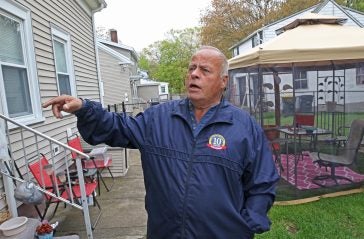
In September 2017, the Rhode Island Department of Health discovered that 35 wells in Oakland village were contaminated with a class of widely used chemicals that many experts believe is contributing to a global public-health crisis. Follow-up tests in the neighborhood a few weeks later found the same substances in six private wells.
The human-made compounds that fall into the family of per- and polyfluoroalkyl substances, or PFAS, are added to foams used to fight fires and applied to cookware and packaging to keep food from sticking and to carpets and furniture to prevent staining.
It wasn’t until six years ago that the first tests for the substances in drinking water supplies in Rhode Island were carried out.
As required by the EPA, all large water systems — those serving more than 10,000 people — and a sample of smaller systems, 15 in all, carried out tests for PFOA, PFOS and four other compounds between 2013 and 2015.
Only two systems, Cumberland and Westerly, showed the presence of the chemicals. Both were below the EPA advisory level at the time, and in subsequent testing, the levels have dropped. The levels at several wells in Westerly, which ranged as high as about 40 ppt, have most recently hovered around 10 ppt, and the levels at a well in Cumberland, which were as high as 80 ppt and are believed to have been caused by plumbing tape on a pipe, were down to about 20 ppt, according to the health department.
In another round of tests that is now underway, the health department is looking at water supplies near fire stations all around Rhode Island that may also be storing firefighting foam. They are also sampling wells near schools, because floor waxes sometimes used in school buildings contain PFAS. There is a possibility that low levels of the chemicals found in school wells in Charlestown and Scituate during the 2017 tests were caused by floor waxes that passed through septic systems into groundwater.
The major water systems in the state are also being retested. When the tests are completed in June, it will mean that 49 percent of community water systems and all schools with wells in the state will have been sampled for PFAS. Homeowners with wells, restaurants and others are also being advised to do their own tests if they are near places where the chemicals are found.

